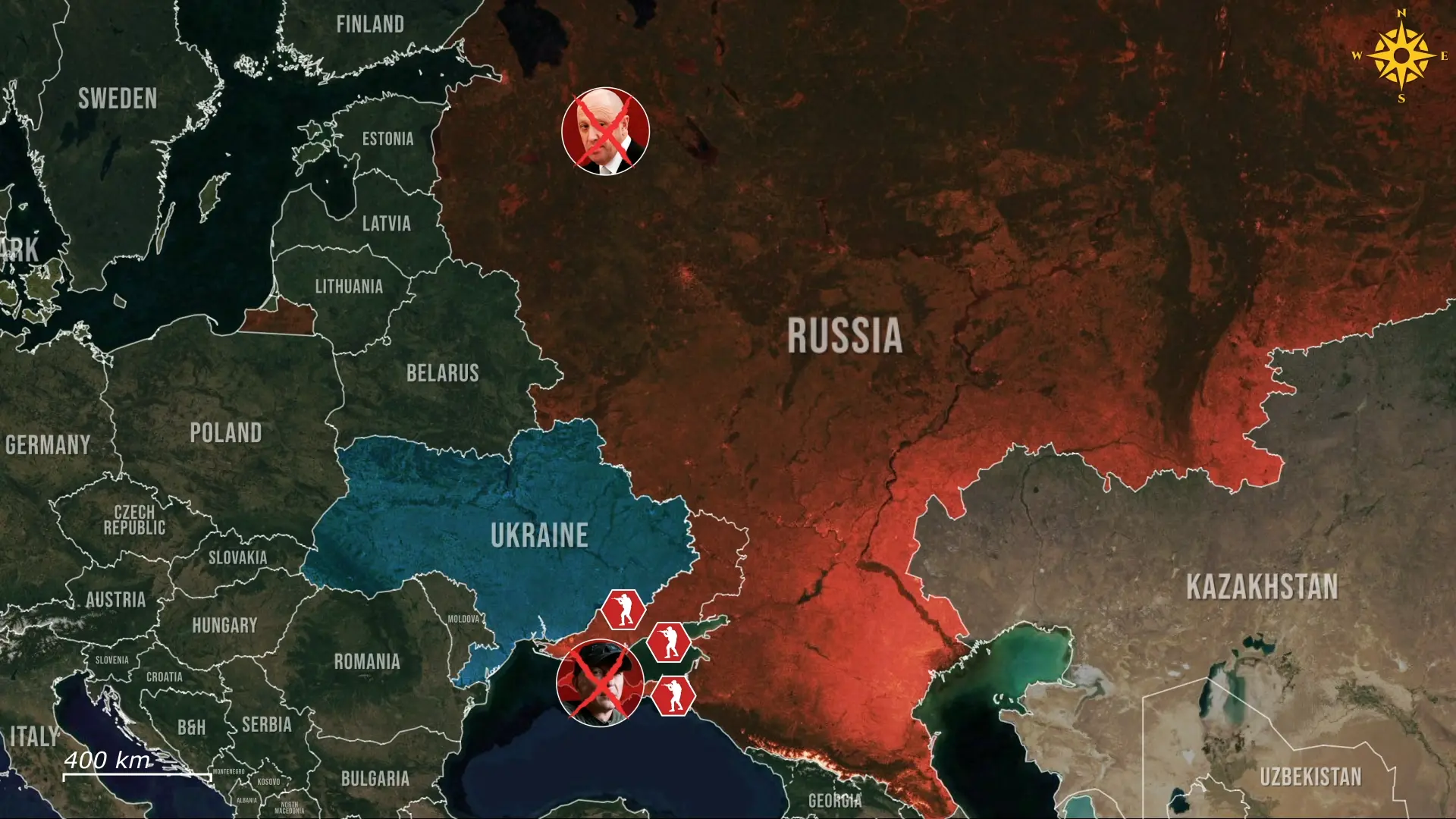Today, there is big news from the Russian Federation.
Here, Ukrainian forces executed a series of precision strikes aimed at critically undermining Russia’s air strike capabilities, delivering powerful blows to several strategically significant Russian airfields and ammunition storages. By limiting Russian air power, the Ukrainians aim to leave the Russian ground forces without fire support and make their attacks much more vulnerable.

One of the most impactful attacks occurred at the Borisoglebsk airfield in Russia’s Voronezh region. Ukrainian forces struck the airbase, home to advanced Russian jets including Su 34, Su 35S, and Su 30SM aircraft. The attack resulted in massive fires, destroying a critical depot containing KAB guided aerial bombs and severely damaging at least one combat training jet, with likely several more jets destroyed as well. Damage assessments are ongoing, but preliminary reports suggest substantial impairment of offensive Russian aerial capabilities.

Another successful strike targeted the Khalino airbase in Russia’s Kursk region. Ukrainian munitions precisely hit a storage facility housing aerial bombs and missiles, destroying a Russian Pantsir-S1 air defense system guarding the site as well.

Ukrainian intelligence also coordinated a devastating strike against the Russian 1060th Logistics Support Center in the Bryansk region, triggering extensive fires and secondary detonations. This destroyed several Russian munition depots full of rocket fuel, lubricants, and air-launched missiles and bombs.

But the most painful strike for Russia occurred at the Marinovka airbase in the Volgograd region, where Ukrainian Special Operations Forces confirmed the destruction of four advanced Su-34 fighter-bombers, Russia’s key tactical aircraft used for launching air strikes on Ukraine.

Satellite imagery clearly shows extensive damage, including multiple craters, indicating the destruction of several ordnance storage sites. A former Russian military pilot and prominent aviation analyst bitterly commented, calling this event another multibillion-ruble loss that could and should have been prevented, underscoring severe lapses in Russian operational security.

Remarkably, Russian airbase personnel continue placing tires over jet aircraft as protective measures against Ukrainian drone strikes, despite repeated clear evidence of ineffectiveness. This measure is not only futile, providing negligible protection, but also unnecessarily burdens Russian maintenance crews, further impacting their operational readiness and efficiency. Ukrainian drones and missiles, indifferent to these rudimentary tire barriers, continue devastating Russian aircraft on the ground with alarming precision.


Ukrainian strategic logic behind these targeted strikes is clear and purposeful, translating to Russian tactics on the ground.

Typically, Russians overwhelm Ukrainian positions through intense artillery bombardment and air strikes, after Russian ground forces locate them by sacrificing waves of low-skilled infantry as bait for Ukrainian fire to identify targets.

By systematically destroying Russian aircraft, ammunition storages, and air-defense infrastructure in rear areas, Ukrainian forces severely limit Russia’s capacity to support ground assaults through air power, thereby significantly relieving pressure on Ukrainian front-line troops.

These Ukrainian operations also force the Russians into higher risk and intensity of air operations, trying to achieve the same effect, but with fewer aircraft and munitions available. Moreover, intensified usage of aircraft without adequately skilled maintenance crews significantly heightens accident risks. Illustrating this vulnerability, another Russian Su-34 recently crashed due to a landing gear malfunction, resulting in the death of an experienced pilot. Such self-inflicted losses, exacerbated by the existing loss of hundreds of skilled pilots and technical personnel, only compound Russia’s already severe battlefield attrition.


Furthermore, to sustain intensified air operations and reduce aircraft turnaround times, Russia has positioned many aircraft dangerously close to the frontline. And although Russia initially responded to Ukraine’s devastating Operation Spiderweb by constructing concrete protective structures, recent strikes indicate that these defensive efforts have not been sufficiently scaled or perhaps even completely abandoned, with no large-scale public outcry to force base commanders to continue construction.

This could potentially lead to another large-scale Ukrainian attack against key Russian air force assets on the ground.

Overall, Ukraine’s sustained campaign against Russian aviation remains strategically indispensable. By weakening Russian air strike capabilities, Ukraine effectively safeguards civilian infrastructure, protects frontline troops, and critically undermines Russian offensive potential during the decisive summer months. Neutralizing Russian air superiority remains paramount, enabling Ukrainian defenders to repel assaults while systematically degrading Russian combat power ahead of major battles.



.jpg)








Comments